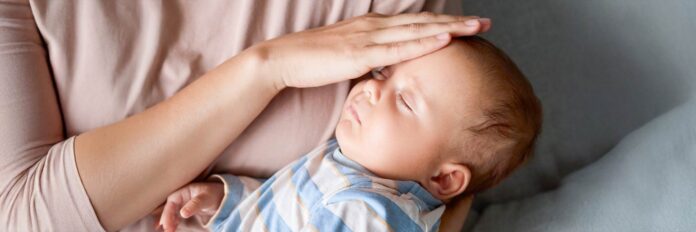When it comes to keeping babies comfortable at night, the common wisdom is that a baby’s room should be kept between 68°F and 72°F. Experts also recommend leaning toward the cooler side because babies conserve more of their body heat in the first months of life, and overheating can be dangerous.
However, every baby is different, and your local climate, the heating and cooling system in your home, and your baby’s sleeping clothes can all affect their needs. Over time, you’ll get a better idea of what your baby likes. But in the meantime, it’s important to be able to tell whether your baby’s room is too cold or hot for them. Keep reading to learn key signs, tips for keeping them comfortable and more.
Signs your baby is too hot while sleeping
If your baby’s sleeping environment is too hot for them, there will typically be a number of signs. In addition to being fussy or having trouble settling, they may start breathing faster than normal and not respond as strongly to stimulation like being touched or lights turning on.
It’s also important to check for physical symptoms of overheating in case there aren’t obvious changes in your baby’s behavior. Physical symptoms can include:
- Flushed cheeks
- Heat rash
- Skin that’s hot to the touch (check by feeling their neck, back or stomach)
- Sweating
If your baby is showing signs of overheating, remove any excess layers of clothing they have on and move them to a cooler environment. If their symptoms don’t start improving within 30 minutes, seek emergency medical attention.
How to tell if your baby is too cold at night
Checking for signs that your baby is too cold is similar to checking if they’re too hot – you’re just looking for different symptoms. A chilly baby may be fussy or unsettled, and they may shiver.
The main physical sign that your baby is too cold is if their neck, stomach or back is cool instead of warm. It’s important to check these areas rather than the baby’s hands or feet because their limbs naturally stay cooler than the rest of their body.
In more serious cases, there may be additional symptoms. Seek emergency medical attention if your baby has the above symptoms alongside:
- Breathing issues
- Dull or pale skin
- Feeding issues
- Limpness
- Vomiting
How to help your baby sleep comfortably
Until your baby is old enough to sleep with a blanket and can better regulate their own body temperature (generally after 12 months of age), dressing them for the temperature of their sleeping environment is key. As a general rule, babies need one more layer of pajamas than adults do at the same temperature. Air conditioning and fans can also help regulate the temperature of the room and provide soothing white noise, but make sure they don’t blow directly on your baby.
When it comes to pajamas, light layers are easy to adjust if your baby gets too warm, and sleep sacks or wearable blankets with fitted necks that allow for full movement of their arms and legs are a safe way to help your baby stay warm in colder months.
Do not use weighted sleep sacks as they can prevent your baby from moving safely and freely. Also avoid dressing your baby in anything that could cover their face or head and follow all guidelines for safe infant sleep.
For more advice on baby sleep temperatures, talk with their doctor
If you have questions or concerns about how your baby sleeps, their pediatrician, family doctor or clinician is a great resource. Kids’ health experts have experience with all kinds of babies, and they can give you tailored recommendations for your baby’s room, pajamas, bedding and more.



